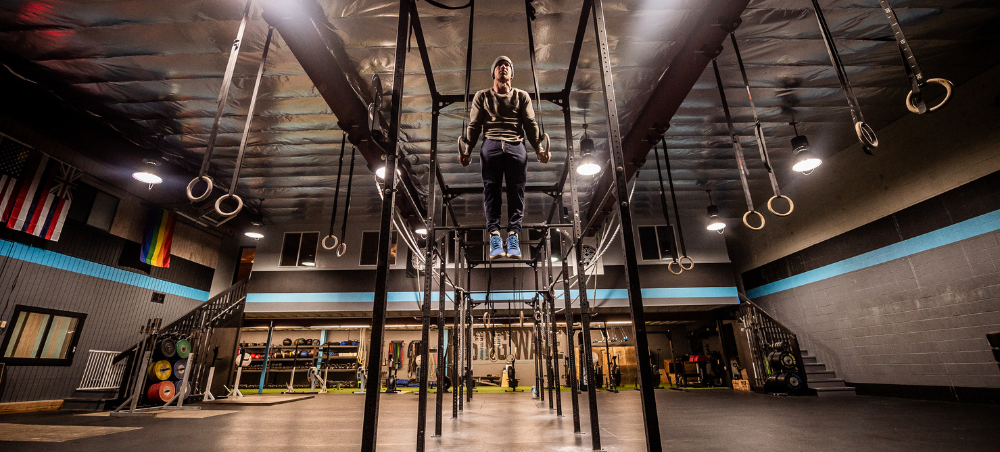
- by NEXO Team
- July 7, 2023
Starting a gym or fitness center is an exciting venture for those passionate about health and wellness. In a world that increasingly prioritizes health and wellness, owning or opening a gym offers the opportunity to make a positive impact on people's lives. Whether you are a fitness enthusiast, an entrepreneur, or someone passionate about helping others achieve their fitness goals, launching a fitness center allows you to create a space where individuals can improve their physical well-being, find support, and foster a sense of community.
Starting a gym requires careful planning, dedication, and a solid strategy. From market research and location selection to equipment procurement and marketing, we've got you covered. In this comprehensive guide, we’ll walk you through the steps necessary to turn your dream of opening a gym into a reality.
Benefits of Starting a Fitness Business
Launching a successful fitness business can offer an array of rewarding benefits that extend beyond financial gain. For starters, it enables you to impact your community's health and wellness significantly. By providing fitness services and health education, you can help individuals improve their physical well-being, boost their mental health, and elevate their overall quality of life.
Furthermore, opening a fitness business gives you the freedom and flexibility to be your own boss. This allows you to manage your working hours, make key decisions, and shape the business in line with your vision and passion. The fitness industry also offers immense diversity and adaptability; you can cater to a broad range of clients by providing different programs and classes like CrossFit, yoga, personal training, and more.
Success in the fitness industry can also open doors to various networking opportunities. Engaging with other health and wellness professionals, suppliers, and industry influencers can lead to meaningful collaborations, partnerships, and business growth.
Lastly, a flourishing fitness business can provide financial stability and strong growth potential, given the consistent demand for health and fitness services. Amidst the rising consciousness about health, fitness businesses are more relevant than ever.
1. Define Your Vision and Business Plan
It is crucial to define your vision and create a solid business plan before embarking on any business endeavor. Determine the type of gym you want to establish, whether it's a general fitness center, a specialized gym, or a boutique studio. Determine your target audience, unique selling proposition (USP), and the services you plan to offer.
Conduct a SWOT analysis, a powerful planning tool that helps identify your fitness business’s internal Strengths and Weaknesses and external Opportunities and Threats. A SWOT analysis offers valuable insights so you can make informed decisions to develop strategies for business growth and sustainability. These elements can help you create a comprehensive business plan encompassing your goals, financial projections, and marketing strategies.
2. Conduct Market Research
It’s essential to conduct market research to understand the local fitness industry, your potential competitors, and the needs of your target market. Analyze your area's demographics, psychographics, and socioeconomic factors to determine the demand for your gym business. Identify existing nearby gyms and fitness centers and assess their strengths, weaknesses, and pricing models. By understanding the gaps in the market, you can tailor your services to meet the unique needs of your target customers and potential members.
3. Secure Financing
It’s imperative to secure the necessary financing to bring your gym to life. Explore various funding options, such as personal savings, bank loans, partnerships, or even crowdfunding. Prepare a detailed financial projection that includes the cost of equipment, lease or purchase of property, staffing expenses, marketing costs, and overhead expenses. A solid financial plan will help you secure funding and provide a roadmap for managing your finances once your gym is operational.
4. Find the Perfect Location
Choosing the right location is vital for the success of your fitness center. Look for an area with a high population density, easy accessibility, and ample parking facilities. Consider proximity to residential areas, offices, and other establishments that align with your target market. Additionally, evaluate the competition in the area to ensure there is enough demand to sustain your gym. Lease or purchase a property that meets your space requirements and offers scope for future expansion.
5. Decide to Lease or Finance Gym Property
When opening a gym, you have the option of leasing or financing the property. Leasing allows for flexibility, lower upfront costs, and the ability to test the market. It provides the opportunity to negotiate lease terms and change locations if needed. On the other hand, financing the property through a loan or mortgage offers long-term ownership and equity growth. Consider location, size, lease terms, financial projections, and other factors to make an informed decision that aligns with your business goals.
6. Acquire Equipment and Set Up Facilities
Investing in quality equipment is crucial to provide a positive experience for your gym members. Identify reputable suppliers and manufacturers to source fitness equipment that aligns with your target market's preferences and needs.
Consider a variety of workout machines, free weights, cardio equipment, and functional training tools. Additionally, create separate spaces for group classes, personal training, and changing rooms. Ensure your facilities are clean, well-maintained, and offer a welcoming atmosphere that encourages your members to achieve their fitness goals.
7. Hire and Train Staff
The success of your fitness center depends on the quality of your staff. Recruit experienced and certified fitness trainers, instructors, and administrative personnel who align with your gym's vision and values. Conduct thorough interviews, check references, and verify certifications to ensure you have a competent team.
Additionally, invest in their continuous training and professional development to stay updated with the latest fitness trends and techniques. A well-trained and motivated staff will enhance the overall member experience and help retain your clientele.
8. Develop a Marketing Strategy
You need a robust marketing strategy to attract members and create awareness about your gym. Utilize both online and offline channels to promote your fitness center. Create a visually appealing website with detailed information about your services, class schedules, and membership options.
Leverage social media platforms to engage with your target audience and share valuable content. Consider offering special promotions, referral incentives, and collaborations with local businesses to attract new members. Build relationships with local influencers and fitness enthusiasts to generate buzz and word-of-mouth referrals. Additionally, participate in community events and sponsor fitness-related initiatives to establish your gym's presence in the area.
Key Takeaways
Launching a fitness center is a demanding yet rewarding endeavor. By following the essential steps outlined in this guide, you can lay a solid foundation for your gym's success. Remember to define your vision, conduct thorough market research, secure adequate financing, choose the right location, acquire quality equipment, hire competent staff, and implement a robust marketing strategy.
With dedication, perseverance, and a commitment to delivering exceptional fitness experiences, you can create a thriving gym that positively impacts the health and wellness of your community. Good luck on your gym startup journey!
Categories
Fill out a short form to contact us with your questions or to receive a customized quote.
Recent Posts
-
 NEXO’s Affinity Program: How Fitness Suppliers and Associations Can Partner for Profit and Protection
December 5, 2025
NEXO’s Affinity Program: How Fitness Suppliers and Associations Can Partner for Profit and Protection
December 5, 2025 -
%20(1).png) How to Insure an MMA Gym Without Paying for Coverage You Don’t Need
December 5, 2025
How to Insure an MMA Gym Without Paying for Coverage You Don’t Need
December 5, 2025 -
 Mastering Liability for Jiu-Jitsu Tournaments and Martial Arts Events
December 5, 2025
Mastering Liability for Jiu-Jitsu Tournaments and Martial Arts Events
December 5, 2025 -
 From Zen to Zoning: What Every Yoga and Pilates Studio Owner Should Know Before Signing a Lease
December 5, 2025
From Zen to Zoning: What Every Yoga and Pilates Studio Owner Should Know Before Signing a Lease
December 5, 2025 -
%20(1).png) Why Your Referral & Loyalty Program Can Impact Your Insurance Rates
December 5, 2025
Why Your Referral & Loyalty Program Can Impact Your Insurance Rates
December 5, 2025
